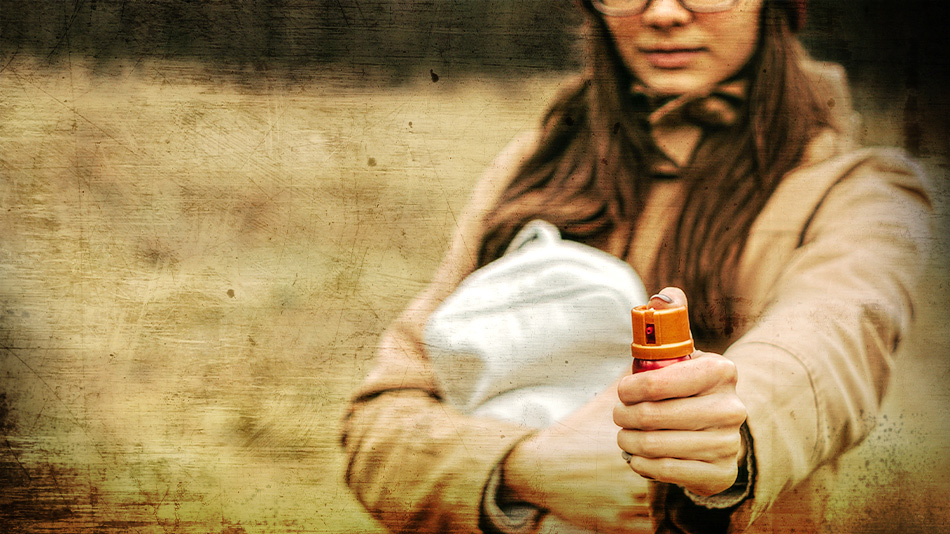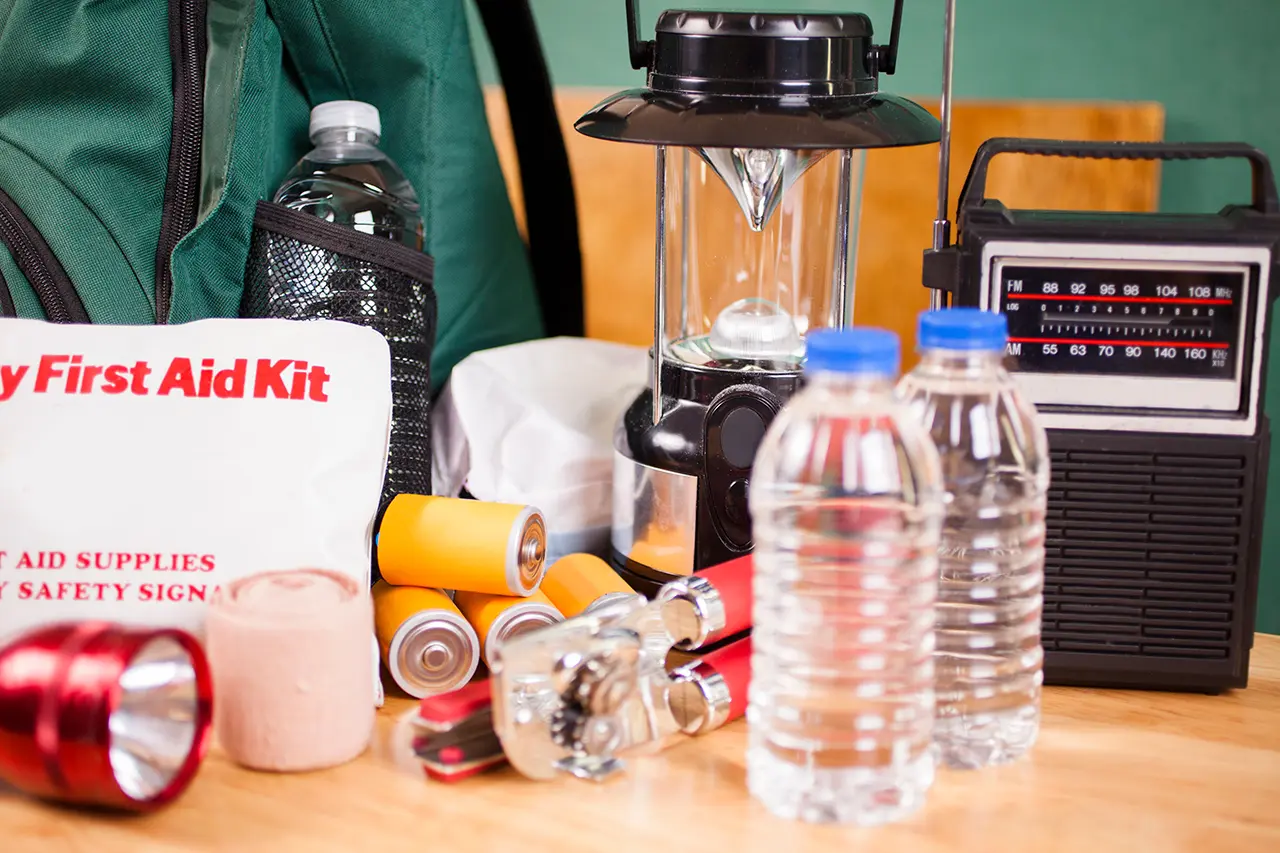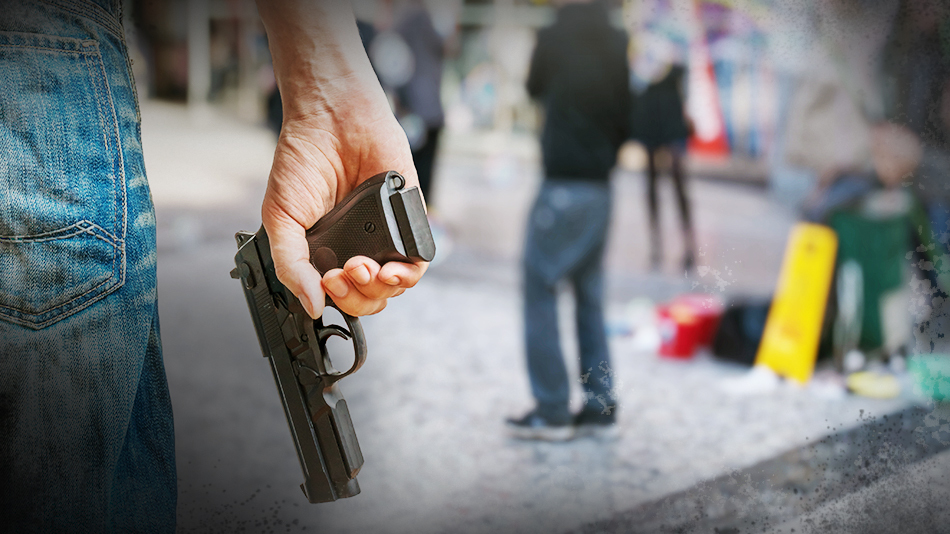
As a gun owner, it’s a good idea to have not only your everyday carry (EDC) gun but some secondary defensive measures as well. The old saying “if all you have is a hammer, everything looks like a nail” comes into play when all you have or know is your gun. Adding to your skillset—increasing the contents of your tactical toolbox—is a good idea for all of us. What secondary measures should you consider? Read on to find out.
De-escalation Techniques
This may be surprising, but it’s smart to take a class or two that includes verbal and physical de-escalation techniques. Learning how to defuse a situation rather than inflame it is a valuable skill. This includes understanding body language—the aggressor’s and your own—and knowing what to say or do in various scenarios. For example, instructors at Gunsite Academy in Paulden, Arizona teach that if someone displaying aggression has their toes angled or aimed at you, they may be a greater potential threat than someone with their feet angled away or toward an exit.
Understanding what you’re watching take place helps as well. A good example is removing a shirt or other clothing, which is generally seen as a warning of aggression by the law enforcement community. According to law enforcement, the reasons people preparing for physical violence may take their shirts off immediately prior to a fight include posturing, to prevent it being used against them by the person they’re engaging, or even to avoid damaging the garment during the confrontation.
Pepper Spray
Although the right pepper spray can be a legitimate secondary self-defense tool, it needs to be used correctly (and effective products must be utilized). A mistake made by many people is simply grabbing a canister and feeling prepared. In reality, there’s more to pepper spray than a spicy version of spray-and-pray.
All brands are not created equally and it’s important to be aware of that fact. Some examples currently on the market include Sabre Red®, POM, and Mace®. Pepper sprays are derived from capsaicinoids, including Oleoresin Capsicum (OC, as in “OC Spray”). A higher percentage of OC does not necessarily mean a spray is a more effective self-defense tool; in reality, it’s not the percentage of OC, it’s the consistency of heat produced by the formula.
From the Sabre Red website:
Major capsaicinoids are the true heat measure and can only be guaranteed through High Performance Liquid Chromatography (HPLC) testing… The only pepper sprays that are government regulated (by the EPA and Health Canada) are animal pepper sprays. Dog sprays range from 0.25% to 1.0% major capsaicinoids and bear sprays range from 1.0% to 2.0% major capsaicinoids. WARNING: Do not purchase pepper spray without checking its content of major capsaicinoids.
It’s a wise idea to first use a canister of practice spray to familiarize yourself with the feel and operation of the canister and so you know the effective distance of the spray.
Laws vary by state regarding use of pepper spray, so take the time to check your local laws.
Do Martial Arts Work?
Being in good shape is certainly a boost to your ability to defend yourself. However, the idea that training in martial arts makes you fully capable of defending yourself against a violent attack is inaccurate. Although it can help, it’s no guarantee you’ll be able to act in time or within the space available without notice. You also need to understand that sports like boxing, as fun as they are and as well as they contribute to overall fitness, may be of limited use when fighting for your life. According to use of force and street fighting experts such as Marc MacYoung, a criminal can throw off a boxer by taking them off their feet.
Bottom line is that a background in martial arts will give you a boost in the self-defense arena, but it shouldn’t be the only skill depended upon for your protection. It’s simply one of many that work together to improve your ability to defend yourself.
What About Edged Weapons?
Although edged weapons, such as fixed blade knives, may be viable secondary defensive measures, they require greater skill than many people realize. Educating yourself on edged weapons, including through available edged weapons classes and watching an experienced individual handle a knife, will illustrate that defending yourself with a blade is not as easy as it may seem. If you’re going to carry a knife for self-defense purposes there are a lot of details to consider, such as the sheath used to carry it, type of knife, and blade length. This also means you need to be familiar with your local laws because different states have varying laws related to edged weapons.
Knives can be good secondary defensive weapons. They are easily portable and generally concealable. But just as with anything they require training. It’s worth noting that knives may penetrate at different depths depending on various factors, such as the shape of their blades and the point of injury. As such, knives may be more unpredictable than some people realize. In addition, it’s important for the individual wielding the blade to do so properly to avoid accidentally cutting themselves, including severely, while trying to use it to defend themselves. All of this is to say it’s important to get educated and trained in any legal weapon you intend to use to defend your life.
What are Some Good Secondary Defensive Measures?
- High-quality pepper spray
- Kubotan/Persuader/mini-baton
- “The Kubotan/Persuader is a pain multiplier. The beautiful thing about it is that it’s on your key ring. No one will ever suspect it is a defensive tool. You need to be able to access your Kubotan quickly and know how to effectively deploy it. The blunt edge of a Kubotan into a pressure point or striking someone’s face with it may give you just enough time to get away. I can teach everyone from elementary age on up how to use this seemingly innocuous tool,” said Tracy Thronburg, Massad Ayoob Group (MAG) staff instructor, MAG certified handgun retention and disarming instructor, and Persuader/Kubotan instructor.
- Firearms aren’t secondary, but are still tools in your toolbox
- Competitive shooter and firearms instructor Jennie Van Tuyl has some advice regarding firearms: “It’s not all about using a firearm. It’s about never letting it get to that point. It’s about not trusting people right off the bat. It’s about keeping you…safe, and who cares if you offend someone. If it’s someone you don’t want to offend, they’ll understand your safety is first. If it’s a stranger, let them be offended, maybe they won’t come back.”
- Physical fitness
- Force-on-force classes
Whether you use secondary defensive measures or not, it’s a good idea to have Legal Defense for Self Defense®coverage. U.S. LawShield® provides peace of mind and help when needed for the use of any legal weapon. Consider quality legal coverage as another valuable part of your self-defense toolbox. You can view membership options here.
The information provided in this publication is intended to provide general information to individuals and is not legal advice. The information included in this publication may not be quoted or referred to in any other publication without the prior written consent of U.S. LawShield, to be given or withheld at our discretion. The information is not a substitute for, and does not replace the advice or representation of a licensed attorney. We strive to ensure the information included in this publication is accurate and current, however, no claim is made to the accuracy of the information and we are not responsible for any consequences that may result from the use of information in this publication. The use of this publication does not create an attorney-client relationship between U.S. LawShield, any independent program attorney, and any individual.





Carrying a small, powerful flashlight, with a beveled edge is a good weapon. You can temporarily blind someone, day or night, and get away. Or if needed it can be used to hit someone that has attacked you. It’s easy to carry in your hand when walking on the street.